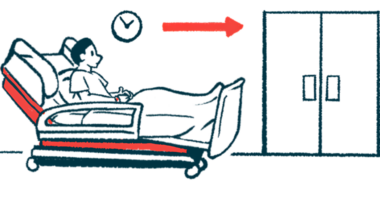DBS for Parkinson’s better than meds alone for quality of life: Study
Patients found to have more stable long-term life quality with surgery

People with Parkinson’s disease who are given deep brain stimulation (DBS) tend to have more stable long-term life quality and motor function than do patients treated with medications only, according to a new study.
Deep brain stimulation, called DBS for short, is a surgical treatment for Parkinson’s disease in which an electrode is implanted in the brain to provide gentle electrical stimulation to specific brain regions — typically the subthalamic nucleus, in which case the treatment is referred to as STN-DBS.
STN-DBS is designed to ease Parkinson’s motor symptoms, and of course, there also are a number of approved medications that can help reduce the signs and symptoms of the disease. To date, however, little is known about the long-term effects of one treatment versus the other.
“This trial found that patients who received STN-DBS had stable QOL [quality of life] at 5-year follow-up, primarily because of improved mobility,” the researchers wrote, adding that this finding “highlights the importance of long-term improvement in outcomes related to activities of daily living.”
The study, “Neurostimulation for Advanced Parkinson Disease and Quality of Life at 5 Years — A Nonrandomized, Controlled Trial,” was published in JAMA Network Open.
1st study to evaluate DBS vs. medications for Parkinson’s patients long term
There have been some previous studies that have compared the effects of STN-DBS against standard-of-care medication (abbreviated MED) in people with Parkinson’s — but these generally haven’t followed patients longer than about three years.
For a longer-term perspective, a team of scientists across Europe now conducted a clinical trial to compare STN-DBS and MED in more than 100 people with advanced Parkinson’s who were followed for five years.
“To our knowledge, this is the first report of 5-year QOL [quality of life] outcomes following STN-DBS for patients with advanced PD [Parkinson’s disease] compared with patients receiving only standard-of-care medical treatment,” the scientists wrote.
Unlike most clinical trials, in which participants are randomly assigned to different treatment groups, the patients in this study chose whether to undergo STN-DBS or take medications. Given that, at the start of the study, or baseline, the two groups weren’t balanced in terms of demographics and clinical factors, as would typically be the case.
To account for this variation, the researchers used a tool called propensity score matching. Put simply, this involves selecting pairs of patients from each group who are similar at baseline. Using this strategy, the researchers identified 25 patients treated with STN-DBS and 25 treated with MED, and these patients were used for the analysis.
The main finding of this prospective, quasi-experimental, nonrandomized controlled trial is that QOL [quality of life] outcomes at 5-year follow-up were stable in the … DBS group and worsened in the [medications-only] group.
To assess quality of life, the trial used a standardized tool called the Parkinson’s Disease Questionnaire 8 (PDQ-8). The results showed that, in patients given MED, average PDQ-8 scores were largely stable in the first year, but then gradually worsened over the next four years. Ultimately, after five years, the PDQ-8 scores in the medications-only group were significantly worse than they’d been at baseline, by 49.4%.
In contrast, in the STN-DBS group, PDQ-8 scores improved significantly in the first year after receiving the surgery. Scores then declined somewhat over the following four years — but by the end of the five-year study, the average PDQ-8 score was just a few points worse than it had been at baseline, and the change wasn’t statistically significant. That meaning that it’s mathematically possible the difference could be due to pure chance.
“The main finding of this prospective, quasi-experimental, nonrandomized controlled trial is that QOL [quality of life] outcomes at 5-year follow-up were stable in the STN-DBS group and worsened in the MED group,” the researchers wrote.
Serious safety issues were reported, but resolved, for 17 DBS patients
A standard measure of motor function, called the Scales for Outcomes in PD–motor scale (SCOPA-M), worsened significantly after five years in the MED group. But in the STN-DBS group, average SCOPA-M scores were slightly higher after five years than at baseline, though the difference wasn’t statistically significant.
The researchers also noted that the average daily equivalent dosage of levodopa — a measure used to express the total amount of levodopa a person takes in a day — increased significantly in the MED group over the five years of the study, whereas it decreased significantly in the STN-DBS group. The medication levodopa is widely considered the gold standard for treating Parkinson’s disease.
Over the course of the study, a total of 39 serious safety issues were reported in 17 patients in the STN-DBS group. Of them, 13 were related to the surgery or the device used for DBS. Though all of these safety problems were resolved without further issues, the researchers noted that the safety risks of any invasive operation like DBS “demonstrate the importance of thorough preoperative assessments of risk-benefit ratios.”
The researchers concluded that more benefits were seen with DBS for Parkinson’s than with the use of medications alone.
“These findings may provide helpful information when counseling patients on the efficacy of STN-DBS for PD and monitoring patients postoperatively in long-term follow-up,” the scientists wrote.








